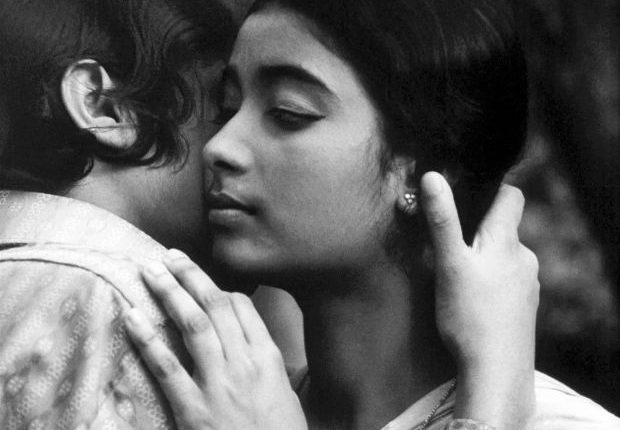By Uditha Devapriya
After what seems to have been an eternity, it was refreshing to hear a prime minister who knew what she was talking about and who she was talking to. Harini Amarasuriya was the chief guest at the Sri Lanka premiere of the 4K restoration of Gehenu Lamai. Reflecting on the film, Amarasuriya noted its director Sumitra Peries as a trendsetter and a trailblazer, saying she was more than a director, arguing that she broadened our understanding of feminism in South Asia.
The tribute touched on three points which scholars of the Sinhala cinema have missed out. The first is that Sumitra’s ascent as a film director followed a trajectory that was very different to all her contemporaries, bar none, in Sri Lanka and South Asia. Unlike the other distinguished figures of women’s filmmaking in the region, Sumitra was educated in the West as an editor and found employment in Sri Lanka as an editor and an assistant director. She became a precursor to the likes of Mira Nair.
The second is that in her choice of source text for her first film, she deliberately overlooked the conventional choices of the day. When Lester Peries selected Golu Hadawatha as the first of three films he made for Ceylon Theatres in 1968, Karunasena Jayalath tended to be viewed negatively by the country’s critical establishment. One of Sumitra’s overarching achievements, which almost no biographer or critic has commented on, was her ability to transform the most mundane, sentimental texts into living works of art. Jayalath’s novels resonated well with popular readers and in Sumitra’s hands Gehenu Lamai became more than just a teenage romance – a morality tale of class and love.
The third point is Sumitra’s ability to even out the political and popular aspects of the story. Watching Gehenu Lamai on the big screen, I was struck at some of the scenes which were suffused – there is no other word for it – by a feminine sensibility.
Note that very first sequence between Kusum, played by Vasanthi Chathurani and Padmini, played by Shyama Ananda. The British filmmaker Mark Cousins, with whom I spoke about Sumitra, said that she “probed shyness and tentative love” well. That sequence with these two girls mingling with each other, which ends with another classmate describing Padmini as “almost Kusum’s partner”, showed how Sumitra was able to delve into a world and an experience – in a word, girl-girl friendships – which, as Prime Minister Amarasuriya noted in her speech, “none of her contemporaries could”.
When the film was screened in Mannheim, Germany, one critic commented on its “aura of pessimism” and its “unobtrusive photography”. Reflecting on the review with me, Sumitra noted that she had to restrain herself from being obtrusive with the camera.
You see this tension throughout Gehenu Lamai; it crops up in some of her other films as well, prominently Ganga Addara, where sequences that otherwise add very little value to the narrative like the protagonist’s wedding go on endlessly. Sumitra herself admitted that she had a tendency to “prettify everything”. But as Mark Cousins has noted, this only added layers and layers of depth to her work.
What distinguishes Gehenu Lamai from Ganga Addara – the latter had the luxury of a rich producer and all the time and freedom Sumitra wanted – is how essentially innocent the former is. The latter is a bolder and more expressive work; emotions are not kept back, they gush out in torrents, sometimes in hysterics.
In Gehenu Lamai, only the audience is privy to Kusum’s inner thoughts. Almost no other character, except Padmini, pays much attention to what she is thinking and feeling. When Nimal’s mother, played by Chitra Vakishta, discovers Kusum’s affair and reproves her for it, Kusum cries by a tree. When Nimal’s mother comes back with a cup of tea and notices the tears, all she can say is, “How can you go on the road looking like that? Here, wipe those off.”
Ultimately, Gehenu Lamai became to Sumitra’s career what Rekava was to Lester’s, Ahas Gawwa to Dharmasena Pathiraja’s and Palagetiyo to Vasantha Obeyesekere’s. When you compare these debut works with their later films, you notice a rawness of style and vision, a somewhat jagged edge, which you don’t in their later years. Commenting on Ahas Gawwa, Regi Siriwardena noted its “inevitable technical roughness”. It’s like what Randall Jarrell wrote of Walt Whitman’s poetry: “[t]here are faults in this passage, and they do not matter”. Pauline Kael wrote the same of some of Brian De Palma’s early films.
I think this is applicable to Gehenu Lamai as well. There is a certain slowness in the second half, especially in those scenes at the school, which might disarm younger audiences today. The dialogues, most of which I believe were taken from Jayalath’s novel, have a sentimental quality which only Jayalath was capable of. Yet ultimately, they do not matter. There is a wider social and political relevance in the narrative, which I feel transcends these limitations. I can do no more than quote the rest of Jarrell’s judgment on Whitman’s poetry; in his words, I think, we can find a true and honest reading of Sumitra’s film.
“… the serious truth, the complete realization of these last lines, make us remember that few poets have shown more of the tears of things, and the joy of things, and of the reality beneath either tears or joy.”
-This article was originally featured on groundviews.org



Comments are closed, but trackbacks and pingbacks are open.